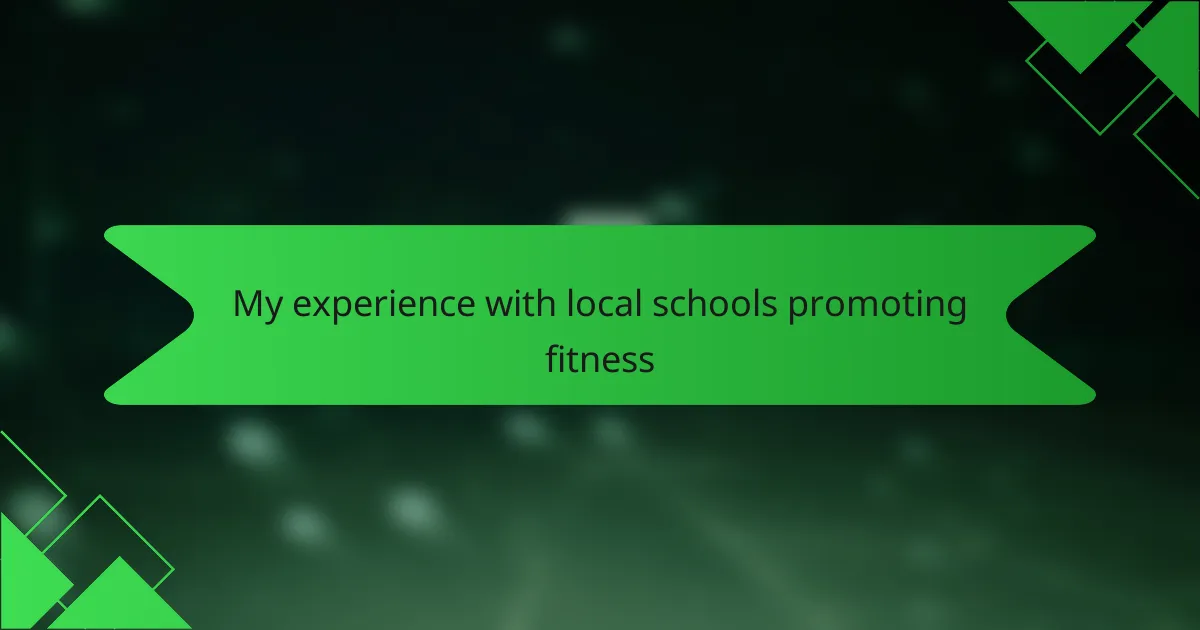Key takeaways
- Obstacle course racing (OCR) combines various physical challenges, fostering excitement and resilience in fitness.
- Incorporating fitness in schools enhances students’ confidence, social skills, and overall well-being.
- Schools are successfully implementing creative fitness programs, including obstacle courses, leading to improved student engagement.
- Collaboration with teachers and parents is crucial for sustaining fitness initiatives and building a supportive community atmosphere.

Introduction to obstacle course racing
Obstacle course racing, or OCR, is more than just running; it’s a thrilling mix of physical challenges that test strength, endurance, and agility. I still remember the first time I tackled a muddy wall—it wasn’t just about getting over it, but about pushing past my own limits.
Have you ever felt that rush of adrenaline when you conquer an obstacle you thought was impossible? That moment is what keeps me coming back to OCR, blending the excitement of a race with a full-body workout. It’s a unique kind of fitness that feels like play but builds serious resilience.
What’s fascinating to me is how OCR combines traditional running with climbing, crawling, and jumping—activities that engage muscles often neglected in regular workouts. This variety keeps things interesting and shows how fitness can be fun, challenging, and downright addictive at the same time.
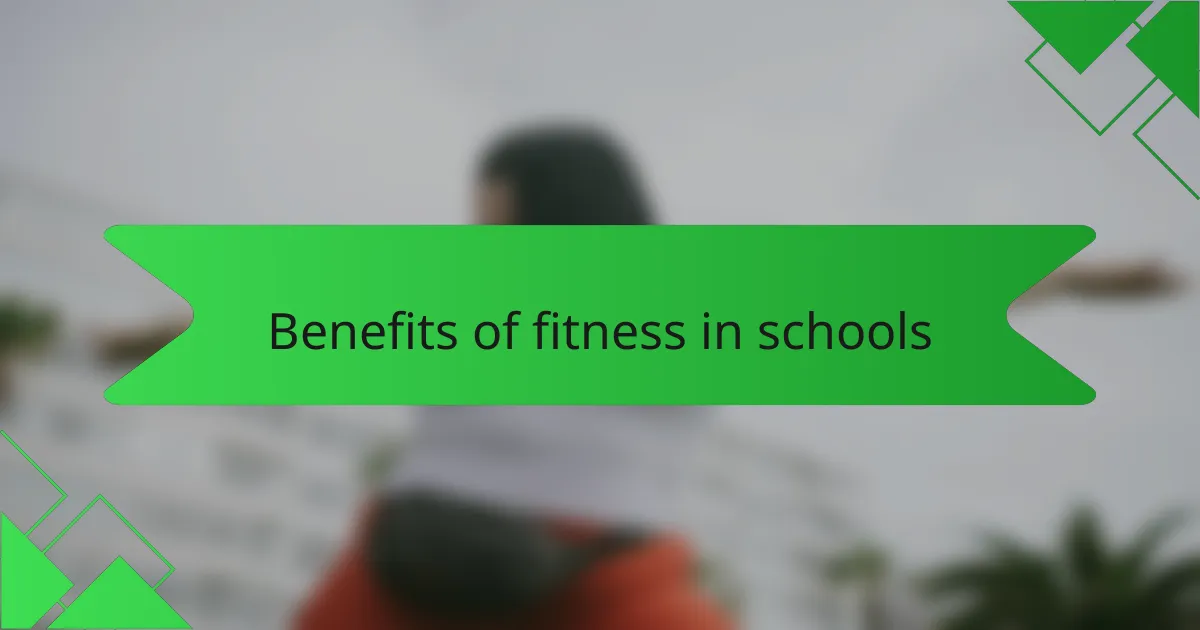
Benefits of fitness in schools
Fitness in schools isn’t just about staying active; it’s about setting kids up for lifelong health. I’ve seen how regular exercise in the school day sparks energy and focus, making everything from math to music feel more achievable. Doesn’t it make sense that when our bodies feel good, our minds do too?
What struck me most was how fitness helped build confidence, especially for those who might not shine in the classroom. I remember a student who struggled academically but found pride in finishing a simple fitness challenge—suddenly, they were eager to try other things. Isn’t that feeling of accomplishment exactly what every child deserves?
Physical activity at school also fosters social skills and teamwork in a natural way. Watching kids navigate fitness games or group exercises reminded me how movement creates connections, collaboration, and fun. Could these moments be laying the groundwork for stronger, healthier communities in the future?
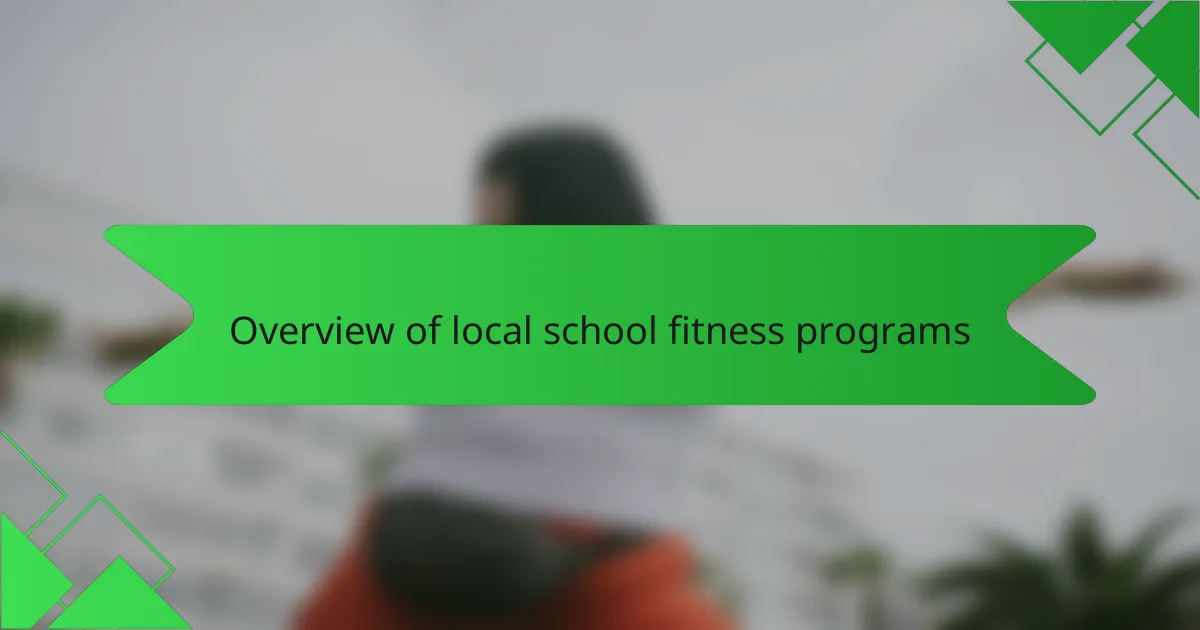
Overview of local school fitness programs
Local schools in my community have really stepped up their game when it comes to promoting fitness. I’ve noticed programs that go beyond traditional gym class, incorporating obstacle courses, team challenges, and even yoga sessions. It’s inspiring to see how diverse these activities are, catering to different interests and skill levels.
What I find especially effective is how these programs mix structured exercises with playful elements. One school I visited used mini obstacle courses during recess, and the kids were genuinely excited to participate. Have you ever seen a group of kids racing through a course with such enthusiasm? It’s a reminder that fitness doesn’t have to be a chore—it can be pure joy.
Some schools also focus on educating students about the benefits of staying active, not just for their bodies but for their mental health as well. I remember a fitness teacher explaining how certain activities can help reduce stress and boost mood, and it struck me how important this holistic approach is. Isn’t it amazing how simple fitness programs can plant seeds for lifelong wellness?
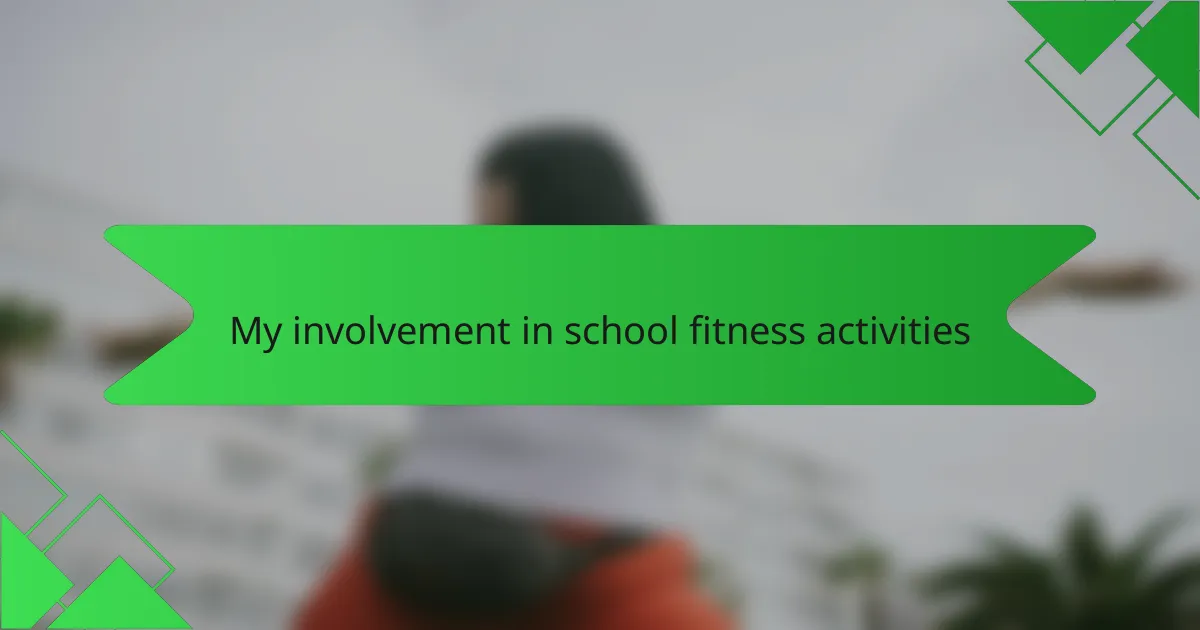
My involvement in school fitness activities
Getting involved in school fitness activities felt natural to me, especially because of my passion for obstacle course racing. I volunteered to help set up mini OCR challenges during PE classes, and seeing kids’ faces light up when they conquered a tricky wall or balance beam was incredibly rewarding. Have you ever noticed how a small victory in movement can spark a big smile?
One memorable moment was coaching a group of reluctant runners who were hesitant to join the obstacle course relay. After a few tries, their confidence grew, and they began encouraging each other loudly. It made me realize that fitness in schools isn’t just about exercise—it’s about building community and self-belief.
I also participated in school wellness workshops, sharing tips on how to mix fun and fitness. Kids were surprisingly curious, asking questions about my own training and how I stay motivated. That level of engagement showed me how personal stories can inspire the next generation to embrace an active lifestyle. Isn’t that what every fitness advocate hopes for?

Challenges faced in promoting obstacle courses
Promoting obstacle courses in schools hasn’t been without its hurdles. One challenge I often faced was convincing teachers and administrators that OCR isn’t just messy or risky, but a genuine fitness opportunity that builds strength and confidence. Have you ever tried explaining why climbing over a wall is as valuable as running laps? It takes patience and persistence.
Another tricky part was dealing with limited space and resources. Not every school has the gym or outdoor area for a full obstacle setup, and improvising with what’s available sometimes meant scaling down the excitement. I remember thinking, “How do I keep this fun and challenging when the space feels so small?” Creativity became my best tool.
Then there’s the hurdle of participation—sometimes kids hesitate to join because the obstacles seem intimidating or they don’t feel “athletic” enough. I’ve seen the transformation happen when a shy student finally conquers a balance beam or crawls under a net. Isn’t it amazing how overcoming that first mental block can open the door to a whole new world of fitness?

Success stories from school programs
One success story that sticks with me is a local elementary school that introduced a weekly obstacle course challenge. I watched shy students bloom into confident competitors who eagerly awaited each session. Isn’t it amazing how such a simple program can turn hesitation into excitement?
Another standout example involved a middle school fitness fair where obstacle course demos became the highlight of the day. I remember one student who had never been very active signing up on a whim—and by the end, she was leading her friends through the course. Moments like these remind me why school fitness programs matter so much.
What truly impressed me was hearing from a PE teacher about improved attendance and focus after integrating obstacle-based activities. I’ve always believed that success isn’t just measured in medals but in the everyday energy and enthusiasm kids bring to class. Could there be a better way to set young people up for a lifetime of health?
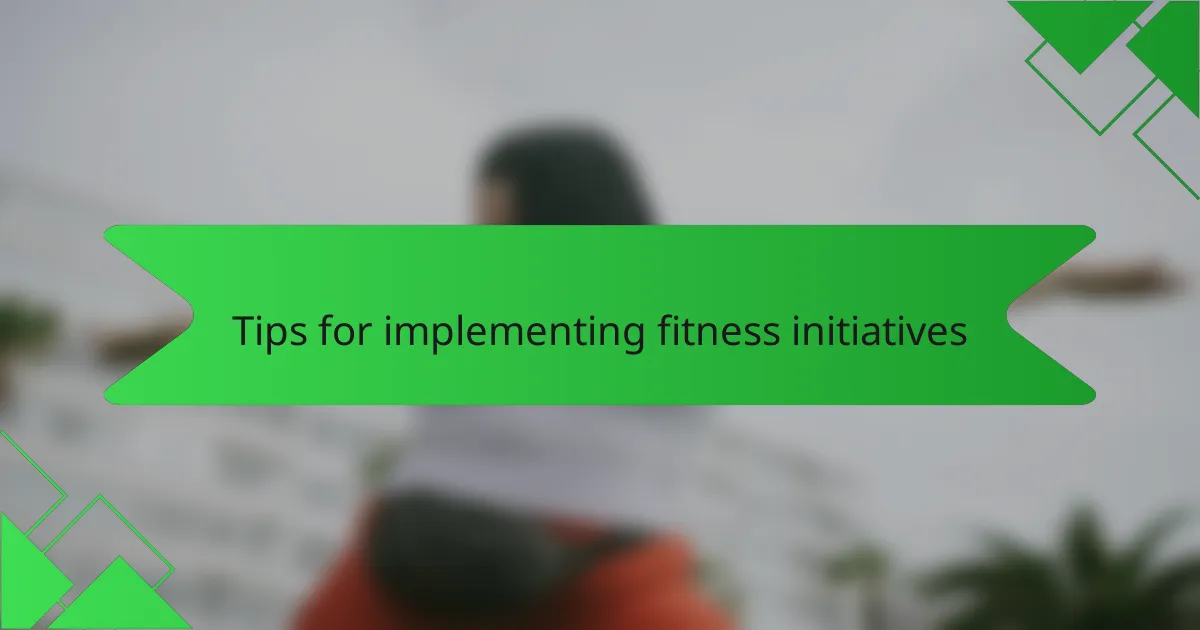
Tips for implementing fitness initiatives
One tip I’ve found essential is starting small and building momentum gradually. When I first helped implement fitness initiatives in schools, beginning with simple activities like timed obstacle runs or team relays made it easier for both students and staff to buy in. Have you noticed how even tiny wins can spark big enthusiasm? That early excitement truly sets the foundation for lasting participation.
Another key insight is the power of making fitness fun and inclusive. I always suggest mixing competitive elements with playful challenges so every kid feels encouraged, no matter their skill level. Remember when I mentioned the shy students who blossomed through obstacle courses? Creating a non-intimidating atmosphere is the secret sauce to unlocking those breakthroughs.
Finally, engaging teachers and parents as active supporters can transform a fitness initiative from a one-off event into a sustainable culture. I’ve seen schools thrive when staff receive proper training and parents join in on occasional fitness days. Isn’t it motivating to witness a whole community rallying behind kids’ health? That collective spirit makes any program stronger and more impactful.
